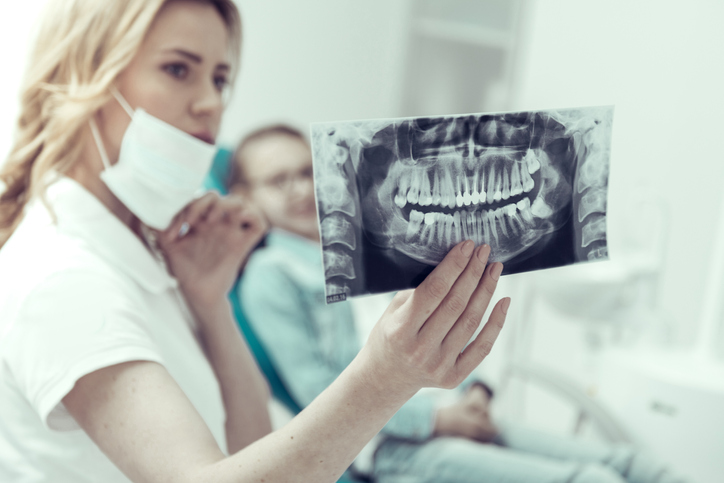Frequent dental x-rays may appear to be a risk for radiation exposure and brain tumors. However, dental x-rays emit such small amounts of radiation that its effects are considered almost an afterthought. Dentists and hygienists are taught the intricacies of radiation dosing and how it interacts with the human body, but the patient’s knowledge is usually quite limited.
Benefits of Dental X-Rays
Dental x-rays provide your dentist with a wealth of information regarding your oral health. The x-ray will show damage which has occurred from an infection or cyst, it will show a bone loss from gum disease, and if there are any effects from trauma, as well as the position of teeth that have not come through yet on children and adults.
The naked eye cannot see what is happening in your mouth until it has become a serious condition. The x-ray is able to detect cracks in your teeth, if teeth are not growing properly, and are able to alert your dentist if there are signs of cysts or cancer. With early detection of many oral health issues, your dentist can perform preventive dentistry or begin treatments early, so the condition does not become severe.
The dental x-ray is a significant part of your dental care to help you maintain a healthy mouth for life. Your dentist uses the lowest amount of dental x-ray exposure.
Radiation From Dental X-rays (Radiographs):
- 4 Bitewings (needed once every year) = 2 mrem
- 1 Panorex (needed once every 5 years) = 4 mrem
Common Sources of Radiation EVERYONE receives:
- Cosmic Radiation in California = 28 mrem/year (more if you live in an area with higher elevation)
- Terrestrial Radiation in California = 30 mrem/year
- From Food & Water = 40 mrem/year
- From Air = 228 mrem/year
So in total, everyone receives at the very least 326 mrem of radiation every year. The average dose of radiation per person from all sources is about 620 mrem per year. So typically, getting dental x-rays will be less than or equal to 0.6% of your total radiation exposure in 1 year.
X-Ray Benefits Outweigh the Risks
According to The National Academy of Sciences, low-doses of radiation from dental and medical x-rays may pose a small risk of cancer. This risk of radiation is so small, so it should not keep you from seeking dental care.
Dental x-rays are taken depending on your individual needs. Your dentist reviews your history, examines your mouth, and from there decides if x-rays are necessary. They allow the dentist to:
- Check for abscesses or cysts
- Diagnose periodontal disease
- Check the status of developing teeth
- Locate cavities or tooth decay
- Check the health of your bones surrounding your teeth
At Oso Marguerite Dental we use digital radiography. Some benefits of digital radiography include:
- The digital X-ray image is quickly processed and available for viewing, whereas film takes longer to be developed.
- Digital X-rays emit 70% less radiation exposure than film X-rays.
- You can enhance the digital image with a series of processing techniques, such as adjusting the brightness or contrast.
- Digital X-rays produce larger photos for better detail and analysis.
Who You Should Contact For Dental Advice
Contact Oso Marguerite Dental for all your dental needs. Call us at 949-682-3535 or check our website to discover all the services we offer to ensure your smile remains beautiful and healthy. Serving the Mission Viejo area, we are committed to providing all patients with professional and compassionate dental care.
